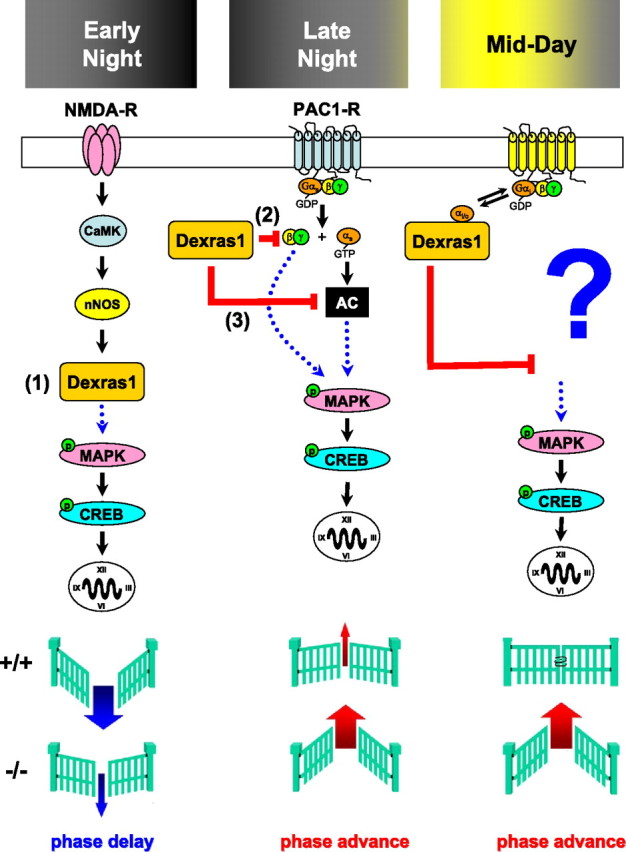Figure 9.

Proposed model of Dexras1 in modulating photic responsiveness of the circadian clock. Photic effects are mediated in part by NMDA and PAC1 receptors expressed in the SCN. In the early night, light-induced activation of NMDA receptors leads to a nitrosylation-dependent enhancement of the guanine nucleotide exchange activity of Dexras1. 1, As a result, Dexras1 activates the MAPK pathway and promotes photic resetting in the early night. Light exposure in the late night leads to activation of Gs-coupled PAC1 receptors, which signal via both the Gsα and Gβγ limbs to the MAPK cascade. Dexras1 inhibits PAC1-mediated MAPK pathway activation by suppressing Gβγ signaling events (2) as well as AC (3). Dexras1 may inhibit AC indirectly by a receptor-independent enhancement of tonic Gi/oα activity. Although we do not know the upstream signaling mechanisms that govern photic resetting in the midday in dexras1−/− mice, our data implicate the downstream activation of p42/p44 MAPK and CREB in the observed daytime photic responses. In summary, light induces smaller phase delays in the early night and larger phase advances in the late night in dexras1−/− mice. In the midday, a photic gate is lost in these animals, revealing an unusual phase advance response.
